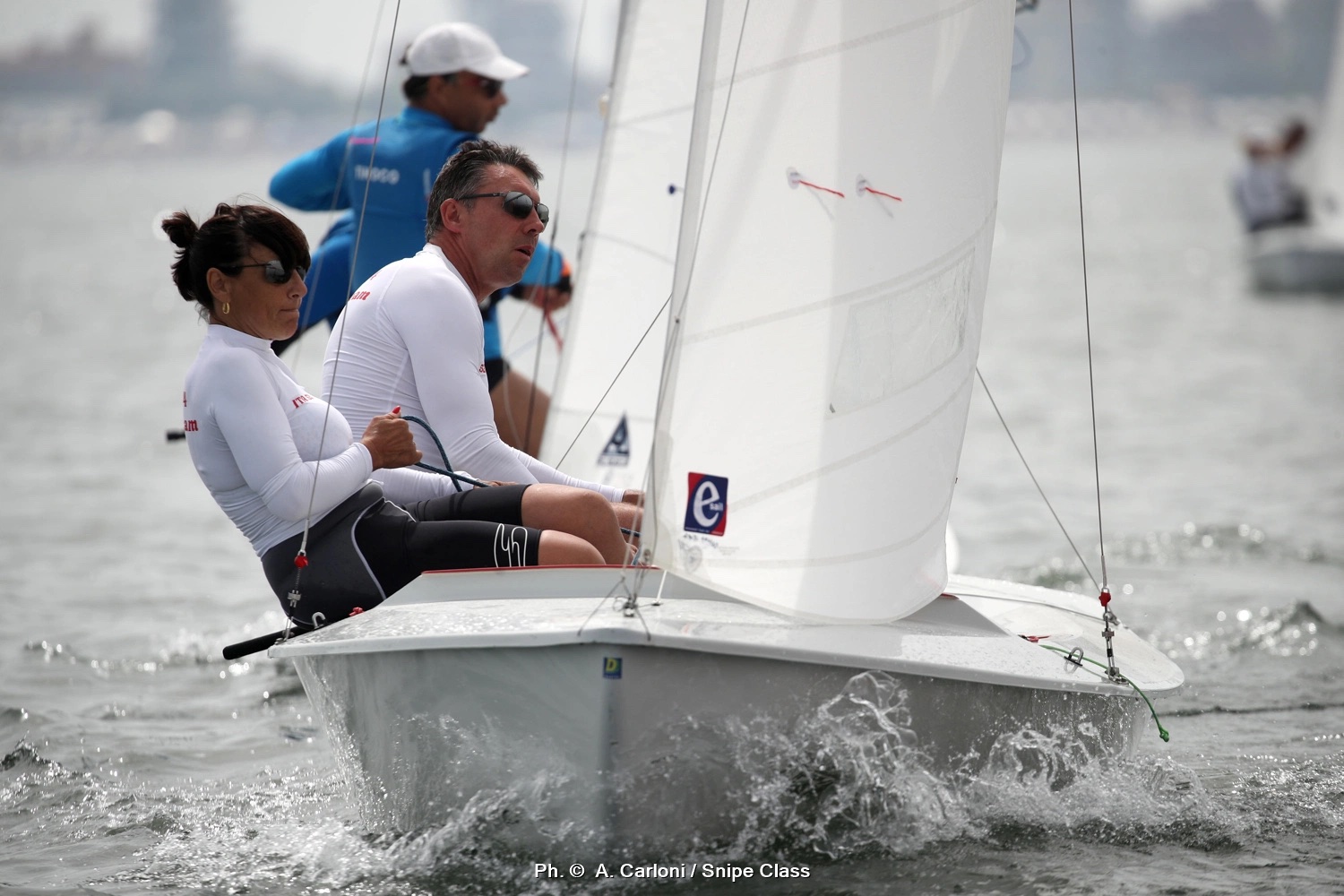Buying a Used Snipe
So you've decided to sail Snipes. You're not quite sure you're ready for a brand new model (what do you do with all those lines?), but you want something that will help you learn the ropes and be competitive with the rest of the fleet. Other fleet members have suggested you look into a good used boat. But what defines a "good used boat?"

Mike McLaughlin, with 30 years experience building Snipes, including the Chubasco and McLaughlin, and now owner of Eclipse Manufacturing, gives his “tire kicking” advice.
Before shopping for a used Snipe, you should first define your intended level of racing (if any), the maximum amount of money you are willing to invest, and your projected annual budget for regattas and sailing expenses.
If you are looking for a daysailing Snipe which will never be raced, look for a self-rescuing fiberglass hull with an aluminum mast, decent sails and simple rigging. Because you needn’t worry about a minimum weight or complicated sail controls, pre-1980 era Snipes are available for very low prices and are great sailing boats.
If you are new to the Snipe Class and want to race competitively, you must have a competitive boat. You don’t have to have a new boat. I recommend buying a good used boat for your first year during which you can hone your skills, crash into marks and docks, give and receive dings, and drill holes and change fittings. You can quickly scale the learning curve and experiment with this boat and become comfortable with sail and mast controls, hiking straps and sheeting systems. As you get used to Snipe racing in general, you can upgrade your boat with new rigging, sails and blades, or buy a new boat knowing exactly what rigging options work best for you. If after this first year you decide Sniping isn’t for you (does this happen?) you can sell he boat and walk away with most of your investment and many new friends.
Hull
Let’s look at the important features of a competitive used Snipe. The first thing is hull shape. Chubasco, Eclipse, Jibetech, McLaughlin, Mueller, Persson, and Phoenix are all good shapes and will win races. The Chubasco and older Phoenix and Mueller hulls, while good shapes, may be over weight or “soft”. The advent of vacuum bonded PVC foams [i.e. Klegecel] in 1980 not only made for long lasting boats, but reduced the chance of hulls absorbing water and becoming overweight.
Weigh the prospective boat: if it is more than five pounds overweight with no visible corrector lead, look at other boats. Don’t worry about the moment of inertia; it is not that important in the big picture and most post-1980 boats will be at or near the allowable minimum.
Check the overall structure of the hull and deck. There should be no soft spots on the hull, deck, or floor liner. Most used boats will have had some rigging changes so there may be some small holes or patches. Check to see that all fittings and hiking straps are well fastened and caulked and check the overall condition of all parts.
Mast
An absolute must for a boat to be competitive is a bendy mast. Cobra II, Firestix, Sidewinder, Proctor Miracle or Bryant all will work and only the Firestix is out of production. If the boat has a Cobra I, Mueller, Proctor A, E or EX, shop on or plan to spend approximately $880.00 for a mast upgrade. Most used boats will come with at least one set of sails. If the sails are more than two years old, they might be OK for fleet racing, but plan on spending some of your sailing budget soon for a new set. Remcmber that your mast-sail combination is the key to boat speed and should have top priority!
Blades
Of lesser importance are the blades – – your daggerboard and rudder. The daggerboard should be straight and smooth and all edges should be well tapered to the l” tolerance. The leading edge may need to be sharpened but this can be done on a milling machine by parts suppliers or you can do it with a big file and much elbow grease. The rudder should be fair and stiff and should fit tightly into the transom gudgeons. The tiller should have no play with the rudder head and the tiller extension should be at least 36 inches long with a flexible rubber connector. Rudder thicknesses and shapes vary, but generally a fat(l 3/8-1 1/2″) rudder is best for big swells and lumps, and thin (1-1 1/2 “) is best for flat water sailing.
Trailer
If you plan on traveling, check out the trailer carefully. Obviously inspect the welds, tires and support bunks for proper padding and fit, but always inspect the bearings, lug nuts and lights and carry a spare tire. Many regattas are remembered only for trailer problems and not the good sailing or good friends.
Information
In such short space, all Snipe construction and historical evolution can’t be fully covered. If a used Snipe interests you, find the hull number and manufacturer and call for a background check. SCIRA will only provide research for current members of the Snipe Class. Use the Boat look-up feature on this website: “Membership/Boat Look-up” tab on the home page. Then type in the hull number. All boats are recorded by hull number. Any information on hulls have been entered into the online database. If a Measurement Data Sheet exists on the boat, it will be listed here as well as the original owner and if the boat has been registered with SCIRA.
If you are looking for a used boat, you can visit the National Websites or visit the FB Page SnipeToday Group – Snipe Buy / Sell / Charter
